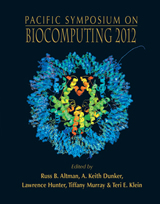Linking PharmGKB to Phenotype Studies and Animal Models of Disease for Drug Repurposing
Robert Hoehndorf1, Anika Oellrich2, Dietrich Rebholz-Schuhmann2, Paul Schofield3, and Georgios V. Gkoutos1
1Department of Genetics, University of Cambridge Downing Street, Cambridge, CB2 3EH, UK;
2European Bioinformatics Institute Wellcome Trust Genome Campus, Hinxton, Cambridge, CB10 1SD, UK;
3Department of Physiology, Development and Neuroscience, University of Cambridge, Downing Street, Cambridge CB2 3EG, UK, and The Jackson Laboratory, 600, Main Street, Bar Harbor ME 04609-1500, USA
Pacific Symposium on Biocomputing 17:388-399(2012)

Abstract
The investigation of phenotypes in model organisms has the potential to reveal the molecular mechanisms underlying disease. The large-scale comparative analysis of phenotypes across species can reveal novel associations between genotypes and diseases. We use the PhenomeNET network of phenotypic similarity to suggest genotype{disease association, combine them with drug{gene associations available from the PharmGKB database, and infer novel associations between drugs and diseases. We evaluate and quantify our results based on our method's capability to reproduce known drug{disease associations. We find and discuss evidence that levonorgestrel, tretinoin and estradiol are associated with cystic fibrosis (p < 2:65 # 10????6, p < 0:002 and p < 0:031, Wilcoxon signed- rank test, Bonferroni correction) and that ibuprofen may be active in chronic lymphocytic leukemia (p < 2:63 # 10????23, Wilcoxon signed-rank test, Bonferroni correction). To enable access to our results, we implement a web server and make our raw data freely available. Our results are the first steps in implementing an integrated system for the analysis and prediction of drug{disease associations for rare and orphan diseases for which the molecular basis is not known.
[Full-Text PDF] [PSB Home Page]